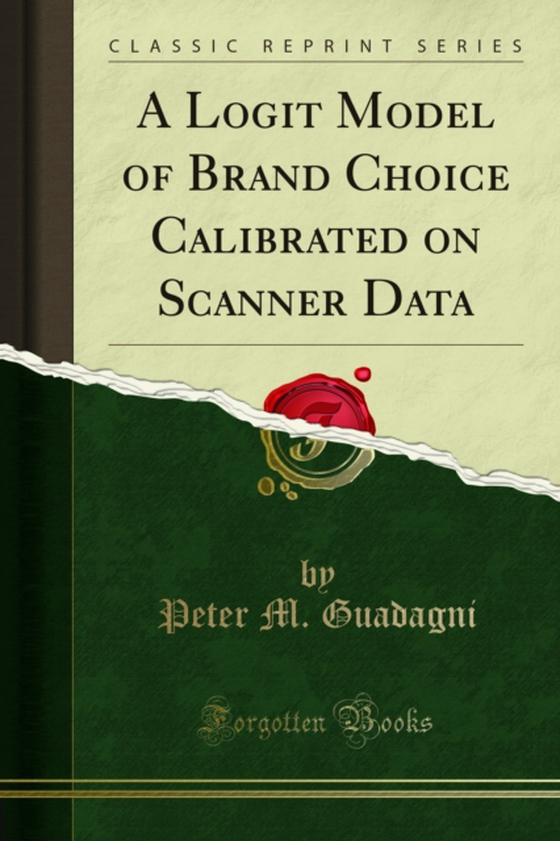
Logit Model of Brand Choice Calibrated on Scanner Data e-bog
59,77 DKK
(inkl. moms 74,71 DKK)
Whilst the greatest effort has been made to ensure the quality of this text, due to the historical nature of this content, in some rare cases there may be minor issues with legibility. Optical scanning of the Universal Product Code in supermarkets provides a new level of detail and completeness in household panel data and makes possible the construction of more comprehensive brand choice models...
E-bog
59,77 DKK
Forlag
Forgotten Books
Udgivet
27 november 2019
Genrer
Sales and marketing
Sprog
English
Format
pdf
Beskyttelse
LCP
ISBN
9780259688501
Whilst the greatest effort has been made to ensure the quality of this text, due to the historical nature of this content, in some rare cases there may be minor issues with legibility. Optical scanning of the Universal Product Code in supermarkets provides a new level of detail and completeness in household panel data and makes possible the construction of more comprehensive brand choice models than hitherto possible. A multinomial logit model calibrated on 32 weeks of purchases of regular ground coffee by 100 households shows high statistical significance for the explanatory variables of brand loyalty, size loyalty, presence/absence of store promotion, regular shelf price and promotional price cut. The model is quite parsimonious in that the coefficients of these variables are modeled to be the same for all coffee brand-sizes. Considering its parsimony, the calibrated model predicts surprisingly well the share of purchases by brand-size in a hold-out sample of 100 households over the 32 week calibration period and a subsequent 20 week forecast period. Discrepencies in prediction are conjectured to be due in part to missing variables.<br><br>Three short term market response measures are calculated from the model: regular shelf price elasticity of share, percent share increase from a promotion with a median price cut, and promotional price cut elasticity of share. Responsiveness varies across brand-sizes in a systematic way with large share brand-sizes showing less responsiveness in percentage terms. On the basis of the model a quantitative picture emerges of groups of loyal customers who are relatively insensitive to marketing actions and a pool of switchers who are quite responsive.
 Dansk
Dansk

